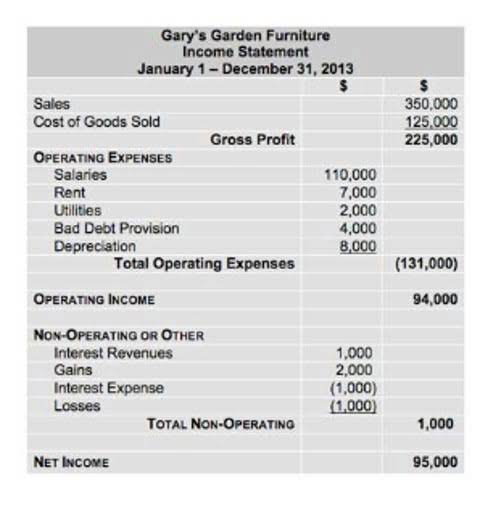
In the eyes of the IRS an LLC can be taxed as a sole proprietorship, a partnership, or a corporation. The rules explained above will apply to how Patty should pay herself as an LLC if she’s taxed as a sole proprietor or partnership. Some business owners pay themselves a salary, while others compensate themselves with an owner’s draw. But how do you know which one (or both) is an option for your business?
- A draw is not a salary, but rather regular payouts instead of periodic ones.
- It’s an informal way to take income from your business and is commonly used by sole proprietors and partnerships, and sometimes by single-member LLCs.
- Avoid withdrawing funds when cash reserves are tight, even if the business is still technically profitable.
- And tax returns for a corporation are likely higher than for a sole proprietorship.
- The benefit of the draw method is that it gives you more flexibility with your wages, allowing you to adjust your compensation based on the performance of your business.
You Provide the Vision. We Provide the Outcomes.
It provides guaranteed payment for the rep regardless of their commissions. Since the employer doesn’t expect the employee to pay back a non-recoverable draw, they’re considered less motivating than recoverable draws. That’s why non-recoverable draws are often used as short-term incentives or to cover expenses for new hires. Calculating an owner’s draw and salary will depend on the specifics of your business and personal financial situation. However, draw vs salary here are some general guidelines to help you get started. However, as revenue stabilizes, switching to a salary offers predictability.

Avoiding Common Tax Pitfalls
- It does not generate interest, although the business venture could grow into a lucrative opportunity, particularly if you tap into government-funded projects.
- Paying yourself a salary also has the benefit of reducing your business’s taxable net income.
- You can still make your draws on a regular schedule as if they were a salary for planning purposes.
- Self-employment tax covers the Social Security and Medicare taxes that employees and employers usually share.
- In October, he receives his $1,000 paycheck, but his sales commissions are only $950.
- Learn more about Bench, our mission, and the dedicated team behind your financial success.
Let’s compare the owners’ draw vs salary and examine which one is the Financial Forecasting For Startups right option for you. First and foremost, just as your business has its own operational expenses, you, too, have living needs. Regularly compensating yourself guarantees that personal expenses, unforeseen costs, and future savings are managed without added pressure. So, make sure that you review the above section on business classifications carefully as that will reveal a lot about the best way to pay yourself as a business owner.

Diversify Your Income
- Working with an accountant or tax advisor can help ensure compliance as you modify your compensation structure.
- By carefully considering the advantages and disadvantages of each option, S-Corporation owners can make informed decisions that support the long-term success of their business.
- A draw against commission is a type of compensation structure that provides a guaranteed amount of pay in advance for each paycheck.
- Unlike owner’s draws, salaries are subject to automatic payroll tax withholdings.
- Although profit is an important metric, cash flow should be a primary consideration when adjusting your pay.
- Payroll taxes such as income tax, Social Security, and Medicare are deducted each pay period, reducing the risk of underpayment and large tax bills.
Form an LLC, corporation, or nonprofit, and get net sales an EIN, business license, or registered agent service. Use Nav to find the right business formation service for your business. Those considerations will help you land on a suitable number to pay yourself, whether you take it as a salary or a draw. You may also lean on data, including the Occupational Employment and Wage Statistics by the U.S. Bureau of Labor Statistics, to help you determine the average salary of those in a similar position. Social Security and Medicare taxes (known together as FICA taxes) are collected from salaries and draws.
Owner’s draw vs. Salary method
One of the primary considerations is the requirement to pay “reasonable compensation” to owners who also work in the business. While a salary is compensation for services rendered by an employee, an owner’s draw is a distribution of profits to the business owner. Respectively, you’ll pay payroll taxes as an employee instead of paying self-employment taxes.Employee wages are an operating expense and a tax deduction. As a business leader, it’s also essential to know if owners are exempt from workers’ compensation. Many states don’t require sole proprietors to carry workers’ compensation insurance.

The Advantage of Owner’s Draw

A non-member manager is considered an employee and should be paid as such. That means paying reasonable compensation and withholding payroll taxes as applicable. No matter what you decide, you’ll have to report all your company profit and losses Schedule C on their personal income tax return first. A small business owner’s salary is no different from anyone else’s.
